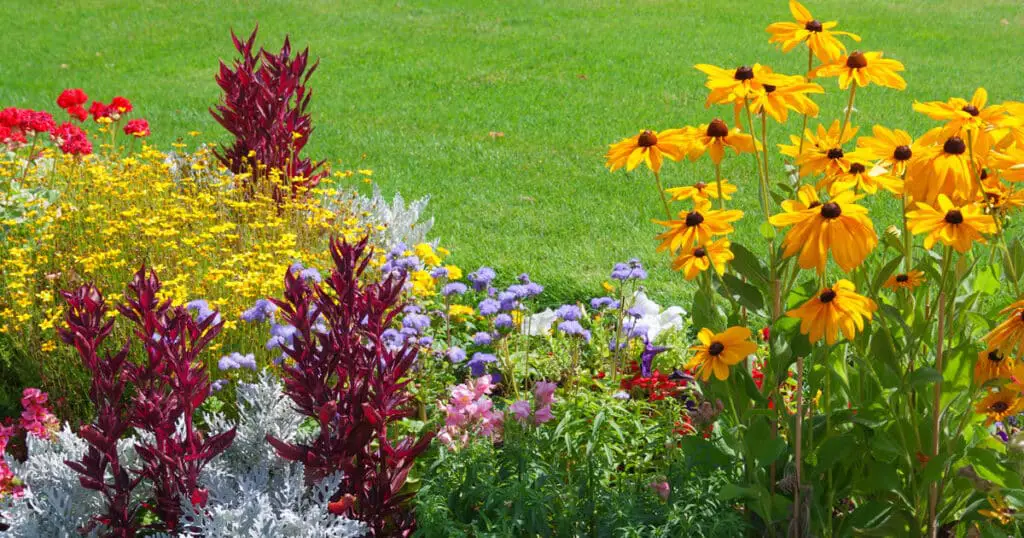There’s nothing worse than putting a lot of time and effort into your garden, just to have it devoured by deer. Do you live in an area with a large white-tailed deer population? Maybe you’ve thought about deer-repellent chemicals or even expensive fencing, but those options can be time-consuming and impractical. Here’s an alternative: plant deer-resistant annuals.
Why Do Deer Eat Flowers?
Deer are herbivores, meaning they only eat plants. They are very instinctive animals, knowing which plants offer them the best nutrition with the least amount of effort.
In the wild, deer will forage and eat whatever they can find. Berries, fruits, leaves, and shrubs are some of their favorite foods.
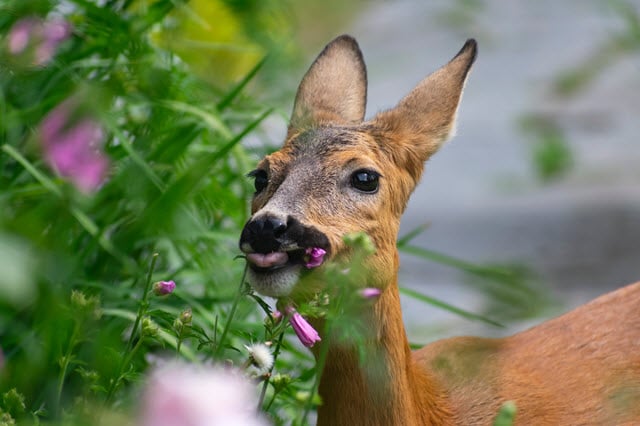
They will also eat grass and a variety of flowers, including roses, tulips, mums, and hydrangeas to name a few. They only turn to these foods if they can’t find enough of their preferred nutrition sources, so early spring is generally the time of year gardeners need to be most on their guard.
Yes, the white-tailed deer in your area can quickly turn into garden pests if you don’t know how to repel them.
A deer’s diet is seasonal and can vary greatly by location. Since they won’t have as much food during winter, they will eat as much as possible in summer and fall.
What are Deer-Resistant Annuals?
As a general rule, deer do not like plants that have a particularly strong scent. Planting herbs around the rim of your garden is a good way to ward them off, and it will give you fresh ingredients to cook with!
Some of the herbs that deer are known not to like include sage, lavender, and mint. Some herbs such as mint can get out of control, so you’ll want to plant them in areas where they aren’t going to intrude too much on your other plants.
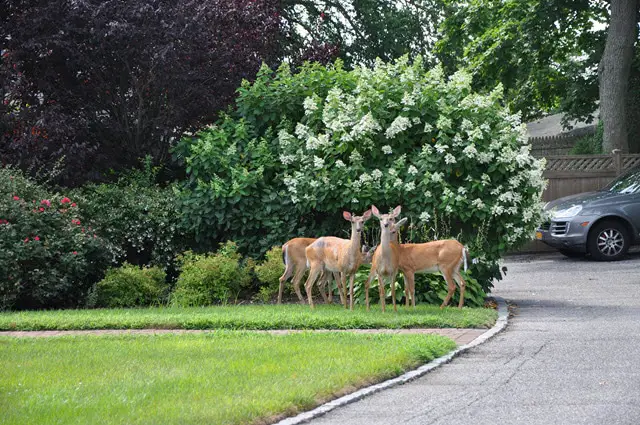
As far as flowers go, marigolds, sunflowers, and lilies of the valley are some of the most popular deer-resistant flowers. But there are plenty of others, too.
Let’s explore deer-resistant annuals for every part of your garden. Below we will list annuals that deer won’t eat for:
- full sun,
- partial sun, and
- shade.
Let’s begin with those sunny beds and borders.
Deer-Resistant Annuals for Full Sun
Even if you have a fairly constant climate that is ideal for a variety of flowers, different spots in your garden will have more sun than others. Full sun locations are typically those which receive 6 or more hours of direct sunlight per day.
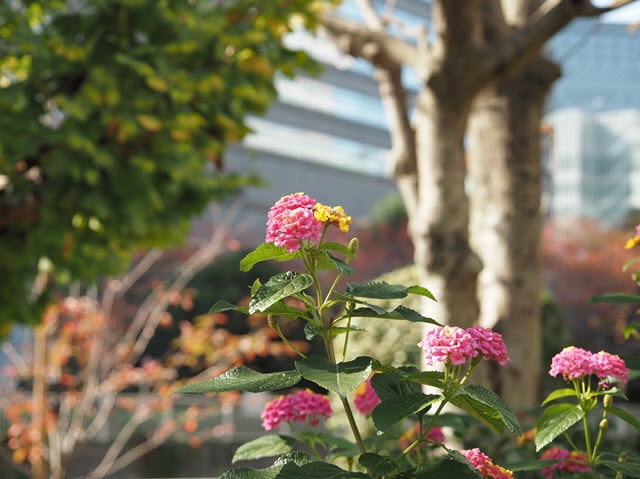
The plants you’ll want for these conditions require that sunlight to put on their full display of blooms.
It’s best to spread out deer-resistant plants to increase the chances of warding off deer, and tuck these annuals toward the front of the border as a living deer fence.
Let’s explore a few deer-resistant annuals that need full sun.
Marigolds
For a brightly colored flower that deer dislike, you can’t do better than marigolds. You can find varieties in bright shades such as orange and yellow.
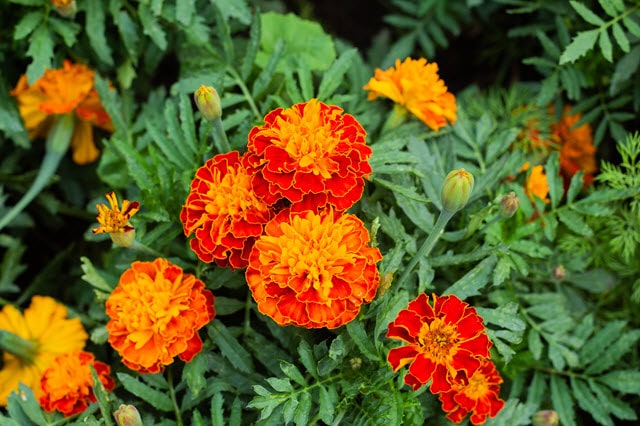
This flower will be suitable for your garden if you live anywhere from USDA zones 3 to 11. It’s the marigold’s strong fragrance that makes it effective at repelling deer.
Many gardeners enjoy planting marigolds around the perimeter of their gardens, to keep deer away. While marigolds do especially well in full sun, you can try planting them in partial sun, too.
Neutral pH soil is best for marigolds.
Canna Lillies
Canna lilies are tropical plants that grow as perennials in their native climates, which are Central and South America. However, you can only grow them as annuals if planting them in cooler regions.
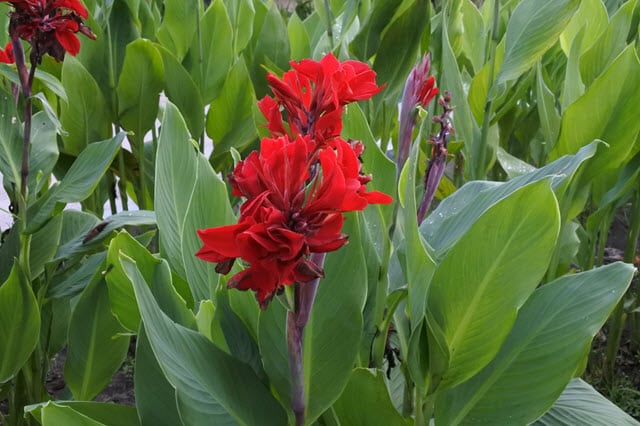
Without exception, canna lilies need full sun. They grow vibrantly colorful flowers, in shades of red, orange, and even pastels.
Canna leaves are enormous, so keep that in mind. This deer-resistant plant is available in different heights, and you can choose one that best suits your garden.
If you live anywhere from zones 2 through 7, you can grow canna lilies as annuals. Make sure they get full sun.
Lantana
Lantana is easy to grow and will bloom all summer long. They’re not only beautiful but will also attract hummingbirds and butterflies.
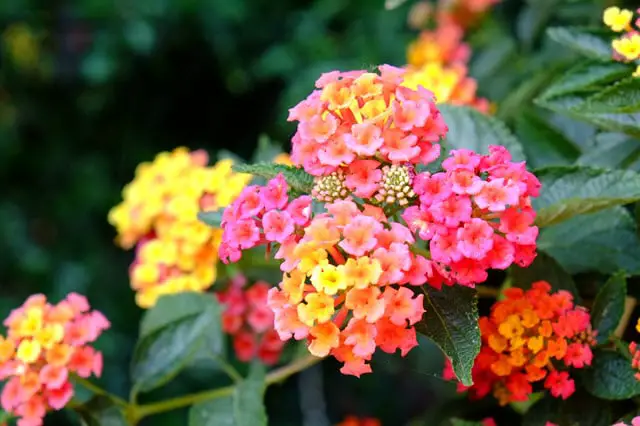
It’s the strong fragrance of lantana, as well as its unappealing texture, that makes it repel deer. It’s also toxic to these animals, which cervids can sense.
You need to live in a warm region to have lantanas in your garden. Do you live in zone 9, 10, or 11? You should have success with this plant.
There are several lantana varieties, and there are several different flower colors to choose from. For example, you can find red, yellow, purple, orange, and pink lantanas.
You should make sure the soil is slightly acidic before adding this plant. Other popular flowers that do well in the sun include annual black-eyed Susans, nasturtiums, and sweet alyssums.
A few other deer-resistant annuals that need full sun:
- Nasturtiums
- Sweet alyssums
- Flowering tobacco plants
Deer-Resistant Annuals for Partial Sun
There are plenty of deer-resistant annuals that you can plant in partial sun locations.
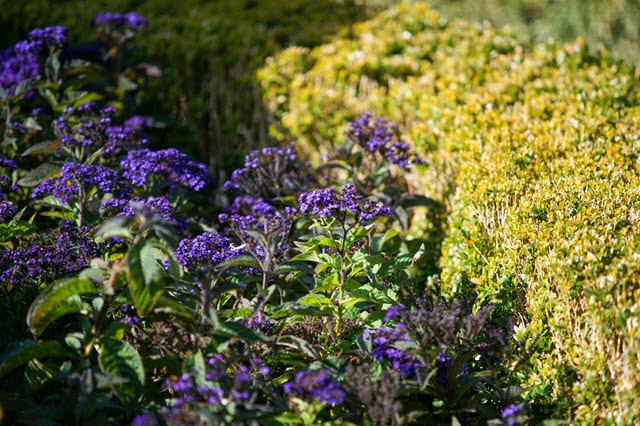
These are locations that typically get between 4 and 6 hours of sunlight per day.
Lily of the Valley
Lily of the valley needs partial shade, so it’s appropriate for partial sun. If you live anywhere from USDA zones 3 through 9, you should find lily of the valley can do well on your property.
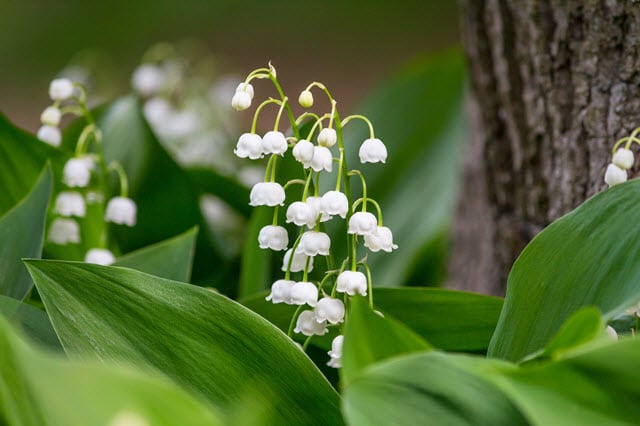
This popular plant is poisonous to deer, which is why they stay away from it. If any rabbits come onto your property, be aware that the lily of the valley is poisonous to them, too.
Generally, they will stay away from it, but you will still want to keep this in mind.
A truly classic addition to any garden, the lily of the valley is a deer-resistant annual for areas of your garden with partial sun. Consider adding it to your property, if appropriate.
Calamint
One of the most beautiful plants to grow in partial shade is the blue cloud calamint. The plant can survive in full sun as well, and they are normally grown perennially, but you can grow them annually as well.
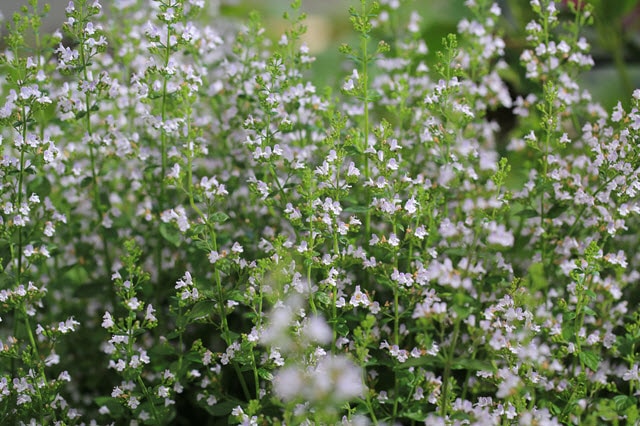
Pictured above is lesser Calamint, but Blue cloud is fairly low maintenance, so if you don’t want to put much effort into your garden, this deer-resistant plant is ideal for keeping deer away. It has a lovely fragrance but one that deer dislike.
Even better, blue cloud calamint is great for people who don’t have a lot of time for gardening. No matter what kind of soil you have, blue cloud calamint will probably thrive.
As well as helping keep deer away, it may also make insects less likely to become a problem on your property.
Painted Tongues
One of the most beautiful annuals that do well in partial-sun is the painted tongue. These deer-resistant flowers have exciting patterns and feature a multitude of colors.
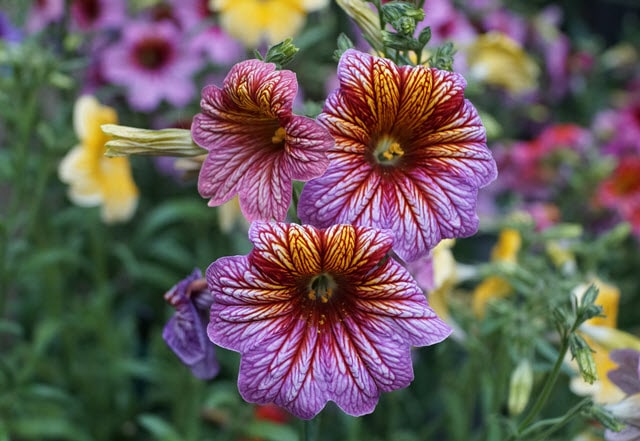
There are several painted tongue color varieties, such as violet, purple, orange, red, blue, and yellow. These deer-resistant flowers can grow quite tall, up to three feet.
The spread is quite wide too, up to two feet. If you want to grow painted tongues on your property, make sure your soil pH is between acidic and neutral.
As an annual, the painted tongues plant can grow in a wide variety of USDA zones. If you want them as a perennial, though, you’d have to be in USDA zone 10 or somewhere warmer.
Heliotropes
Heliotropes are another popular deer-resistant flower. They have a classic look that some consider a bit old-fashioned, but many homeowners love them.
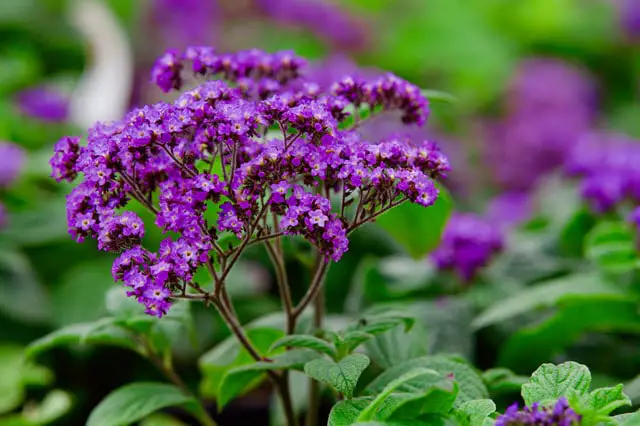
These flowers are traditionally a symbol of love and devotion, and they have a lovely scent. Well, it’s lovely for us, but it helps repel deer.
Heliotropes are grown as a perfume ingredient in temperate climates. These flowers grow best in partial shade, but depending on the variety, they may do well in full sun, too.
For healthy heliotropes, make sure to plant them in well-drained, nutritious soil.
Deer-Resistant Annuals for Shade
If you want to plant deer-resistant annuals in shady areas, there are several to choose from. Shade conditions are typically defined as less than 4 hours of direct sunlight per day.
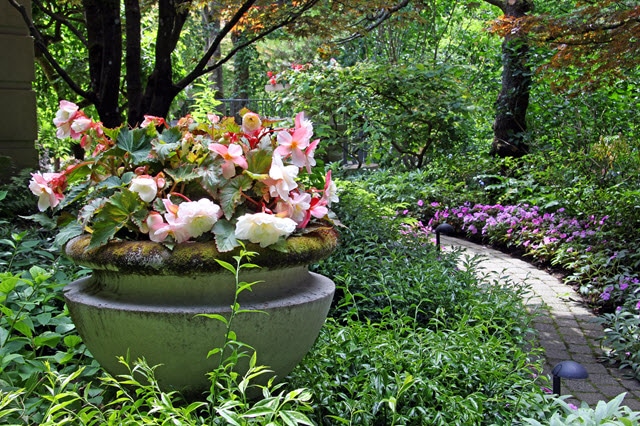
With limited sunlight, it can be tough to find perennials with a lot of color for these locations, making them a great spot to brighten with some annuals deer dislike.
Wishbone (Torenia) Flowers
Wishbone flowers are one of the most popular deer-resistant plants that do well in shade. Their formal name is torenia, but they got the name “wishbone” because of how they have a pair of stamens emerging from the flower’s opposite sides.
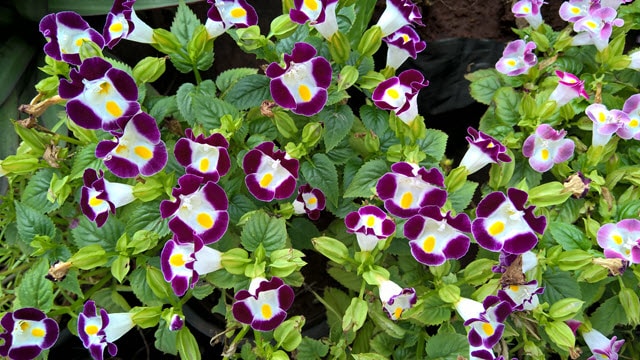
There are trailing and cluster varieties, and they come in a multitude of colors, so you can most certainly find the right kind for your garden! You should plant wishbone flowers in neutral to acidic soil that should be well-drained.
There are trailing and cluster wishbone varieties, and they come in a multitude of colors.
Begonias
Begonias are undeniably beautiful deer-resistant flowers. There are different varieties to choose from, and they thrive in the shade and can be grown as annuals.
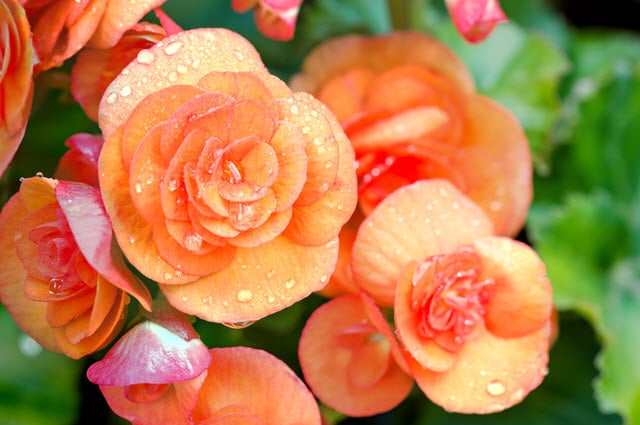
Don’t expose your begonias to full sunlight, as the foliage is prone to burning. Begonias are a little trickier to grow than many other deer-resistant plants. Often, you’ll have to start their growth indoors, and then transplant them to your outdoor garden later on.
Give your begonias well-fertilized soil that excellent draining. If you live in USDA zone 9 or 10, you can grow your begonias outdoors from the beginning. There are different begonia colors to choose from, including yellow, white, pink, red, and orange.
Caladiums
If you want some variety or aren’t a huge fan of flowers, caladiums are one of the leafy plants that are deer resistant. Caladiums have stunning colors and can grow to an impressive size.
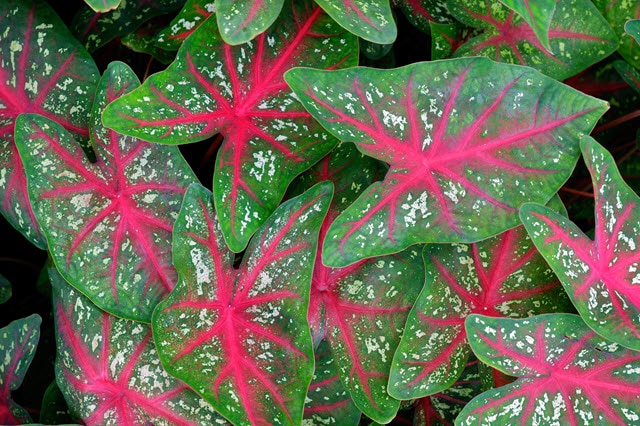
Caladiums are native to the tropics, where they are perennial. If you live in a cooler climate, you can grow them annually and keep them in the garage over the winter.
As tropical plants native to places with plenty of rainfall, caladiums often need regular spraying with water (as well as the usual watering).
Persian Shields
Another great leafy deer-resistant plant is the Persian shield. It features stunning purple and green leaves, so they’re certain to bring extra color to your garden.
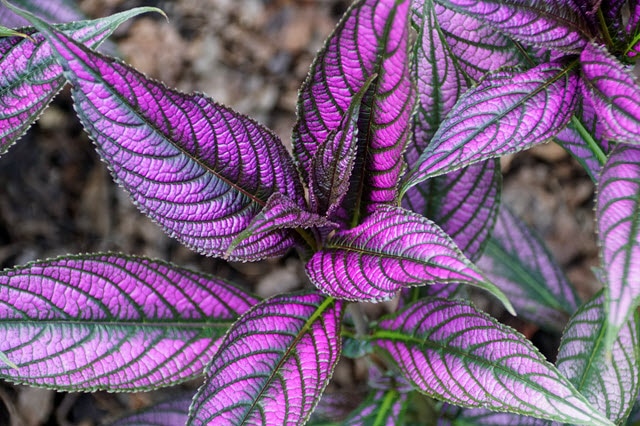
While Persian shields are perennial in some warmer climates, they are grown as annuals in cooler regions. Remember that these plants need shade, so position your Persian shields appropriately on your property.
You can ask your local nursery for tips on your specific location.
Final Tips When Choosing Deer Resistant Annuals
Always remember your region and lifestyle when choosing deer-resistant annuals for your garden. Talk to the gardeners at your local nursery or neighbors with successful gardens for more information.
When choosing the right deer-resistant annuals, think about:
- Light conditions where you will plant it (will it be in full sun, partial sun, or shade?)
- Your soil type (do you have sandy soil that is free-draining, or heavy clay that will keep the roots wet?)
- Your lifestyle (how much time do you plan to spend maintaining your plants?)

If you go to the nursery with this information in mind, it will be easy to read the tags on the available plants, and as long as you choose one of the deer resistant annuals listed on this page, you should be in good shape.

